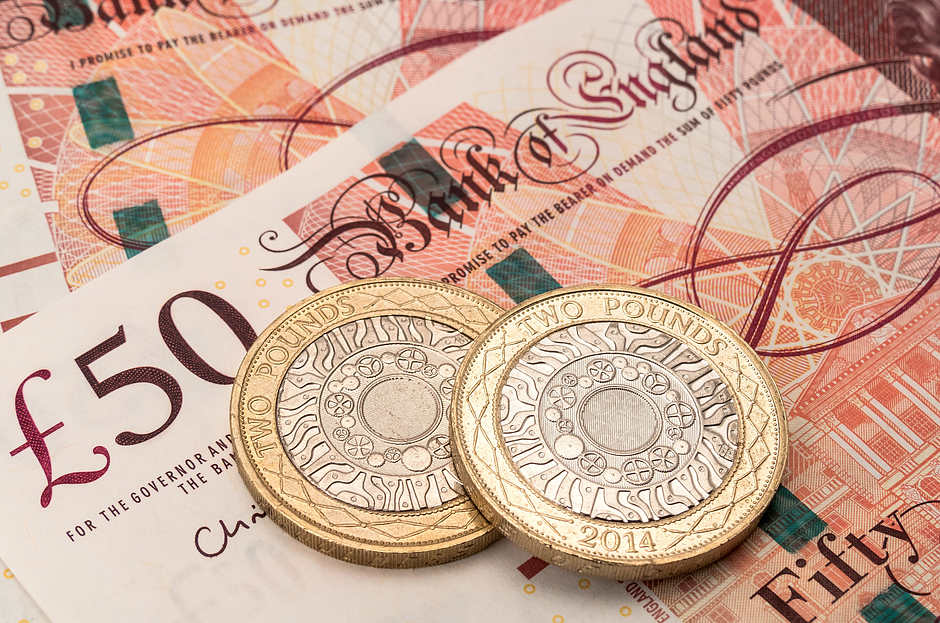GBP/USD holds steady near 1.2950 as traders await US presidential election result
- GBP/USD flat lines around 1.2950 in Tuesday’s early Asian session.
- The Greenback loses ground in response to improved polling for Democratic candidate Kamala Harris.
- The Bank of England is expected to cut interest rates at its November meeting on Thursday.

The GBP/USD pair trades flat near 1.2950 during the early Asian session on Tuesday. Traders will closely monitor the outcome of the US presidential election. On Thursday, the attention will shift to the Bank of England (BoE) and the US Federal Reserve (Fed) monetary policy decisions.
Meanwhile, the US Dollar Index (DXY), which tracks the USD’s value against six major currencies, broke below the 104.00 support and reached fresh two-week lows near 103.60 in response to improved polling for Democratic candidate Kamala Harris.
Strategists said the USD weakness was linked to a poll by the Des Moines Register and Mediacom that showed Harris with a 47-44% lead over Trump in Iowa.
The Fed's rate decision will take center stage on Thursday, which is widely expected to cut rates by a standard 25 basis points (bps) at the November meeting, rather than repeat the large 50 bps easing of its last decision. Fed Funds futures are pricing in over 80% chance of a December cut, while the swaps market is pricing in close to 50% possibility.
On the GBP’s front, economists polled by Reuters forecast a quarter-point reduction in the benchmark rate to 4.75% at its BoE’s rate decision on Thursday. However, the longer-term outlook is less clear, with BoE governor Andrew Bailey unlikely to raise hope of another rate cut before the end of the year.
Pound Sterling FAQs
The Pound Sterling (GBP) is the oldest currency in the world (886 AD) and the official currency of the United Kingdom. It is the fourth most traded unit for foreign exchange (FX) in the world, accounting for 12% of all transactions, averaging $630 billion a day, according to 2022 data. Its key trading pairs are GBP/USD, also known as ‘Cable’, which accounts for 11% of FX, GBP/JPY, or the ‘Dragon’ as it is known by traders (3%), and EUR/GBP (2%). The Pound Sterling is issued by the Bank of England (BoE).
The single most important factor influencing the value of the Pound Sterling is monetary policy decided by the Bank of England. The BoE bases its decisions on whether it has achieved its primary goal of “price stability” – a steady inflation rate of around 2%. Its primary tool for achieving this is the adjustment of interest rates. When inflation is too high, the BoE will try to rein it in by raising interest rates, making it more expensive for people and businesses to access credit. This is generally positive for GBP, as higher interest rates make the UK a more attractive place for global investors to park their money. When inflation falls too low it is a sign economic growth is slowing. In this scenario, the BoE will consider lowering interest rates to cheapen credit so businesses will borrow more to invest in growth-generating projects.
Data releases gauge the health of the economy and can impact the value of the Pound Sterling. Indicators such as GDP, Manufacturing and Services PMIs, and employment can all influence the direction of the GBP. A strong economy is good for Sterling. Not only does it attract more foreign investment but it may encourage the BoE to put up interest rates, which will directly strengthen GBP. Otherwise, if economic data is weak, the Pound Sterling is likely to fall.
Another significant data release for the Pound Sterling is the Trade Balance. This indicator measures the difference between what a country earns from its exports and what it spends on imports over a given period. If a country produces highly sought-after exports, its currency will benefit purely from the extra demand created from foreign buyers seeking to purchase these goods. Therefore, a positive net Trade Balance strengthens a currency and vice versa for a negative balance.
Author

Lallalit Srijandorn
FXStreet
Lallalit Srijandorn is a Parisian at heart. She has lived in France since 2019 and now becomes a digital entrepreneur based in Paris and Bangkok.

















